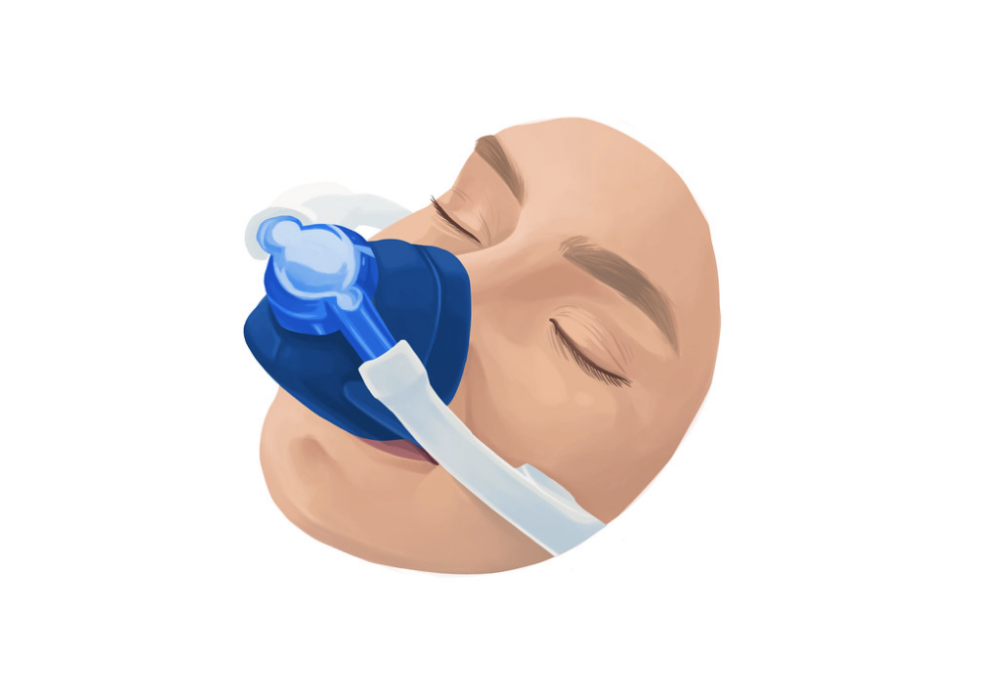

Sleep apnea is a sleeping disorder that causes an interruption in the breathing of an individual when they are asleep. Continuous Positive Airway Pressure (CPAP) therapy is a popular treatment that is often recommended by doctors for sleep apnea patients. It has proven to be effective, primarily for treating obstructive sleep apnea.
There are various types of CPAP masks available, such as simple CPAP face mask, full-face CPAP masks, nasal masks and nasal pillow masks. A full-face CPAP mask is not a great option for those who have heavy facial hair.
Thus, the two popular options for CPAP masks are nasal pillows and nasal masks. A nasal CPAP mask covers the nose of the patients when they sleep to supply air pressure so that the patient can breathe better. The nasal pillow CPAP mask is the extended version of the nasal CPAP mask with slightly different features.
Each type has its advantages and is suited to different user preferences and needs. In this blog, we will explore the key differences between nasal pillows and nasal masks and help you determine which one might be the right CPAP mask for your CPAP treatment.
Nasal pillows are a relatively recent addition to the CPAP mask lineup. They consist of soft, pliable cushions that are inserted into the nostrils, delivering a gentle stream of air directly into the nasal passages. This design offers several benefits:
Nasal pillows have minimal facial contact, making them an excellent choice for individuals who dislike the feeling of a mask covering their entire face. For instance, a full-face CPAP mask can make the patients feel a little claustrophobic due to its bulkiness. Users often feel less claustrophobic and have a more open field of vision with Nasal pillow masks.
Due to soft inserts in the mask, nasal pillows create a tight seal within the nostrils, reducing the likelihood of air leaks. This results in improved therapy efficacy and less disturbance during sleep.
Nasal pillows are lightweight and have a smaller profile compared to other CPAP masks. Thus, they are an ideal choice for travel and those who want a more unobtrusive solution.
Nasal pillows work well for side sleepers since they are less likely to shift during the night, ensuring a consistent seal and airflow.
Some users find nasal pillows to be more comfortable and experience less skin irritation or pressure sores, as they only come into contact with the nostrils. As a result, these masks offer a comfortable setting to sleep in with a mask on.
Nasal pillows are primarily designed for individuals who breathe through their noses. If you are a mouth breather, you may experience dry mouth or discomfort.
Some users may find that nasal pillows can cause nasal irritation, especially if the nostrils are sensitive. Using a humidifier with your CPAP machine can help alleviate this issue.
If you suffer from allergies, nasal congestion, or a deviated septum, you may find it more difficult to breathe through your nose, making nasal pillows less effective.
Nasal masks, on the other hand, cover the nose, delivering air through a cushion that seals around the base of the nostrils and over the nose bridge. This traditional design has its own set of advantages and disadvantages:
Nasal masks are an excellent choice for individuals who tend to breathe through their mouths during sleep. They offer a secure seal, ensuring that air reaches the airway effectively.
Nasal masks are generally more suitable for a broader range of users, including those with nasal congestion or nasal obstructions, since they don't rely on exclusively breathing through the nose.
Nasal masks provide an alternative to users who may experience nasal irritation when using nasal pillows. They only come into contact with the nose bridge and the base of the nostrils.
Although not as minimalistic as nasal pillows, nasal masks have a more open field of vision compared to full-face masks, making them less likely to induce feelings of claustrophobia.
Nasal masks have more extensive facial contact compared to nasal pillows. Some users find this uncomfortable, especially if they are sensitive to pressure points on the face.
Due to their design, nasal masks may be more prone to air leaks if not fitted properly or if the user moves during sleep. This can disrupt therapy and lead to discomfort.
Side sleepers may experience difficulty maintaining a good seal with nasal masks, as the mask can shift when they change positions during sleep.
Choosing between nasal pillows and nasal masks depends on various factors, including personal preferences, comfort, medical considerations, and lifestyle. Your natural breathing pattern plays a significant role in determining which type of CPAP mask is best for you. If you are a nose breather, nasal pillows may work well for you.
Moreover, Some users find the minimalistic design of nasal pillows more comfortable, while others prefer the stability and adaptability of nasal masks. For side sleepers, nasal pillows may provide better comfort, as they are less likely to shift during the night. Nasal masks can be a good choice for back sleepers or those who frequently change positions.
Also, people with skin irritation, sensitive face or pressure sores find nasal pillows to be more comfortable due to their reduced facial contact.
Lastly, if you are a mouth breather, nasal masks are the more practical option. While you can use a chinstrap with nasal pillows, some users prefer the simplicity of a nasal mask in this situation.
Ultimately, the choice between nasal pillows and nasal masks depends on your preference and requirements. Both mask types have their advantages and disadvantages, and what works best for other people may not be suitable for you. It's crucial to prioritize comfort and therapy compliance when making your decision, as consistent use of your CPAP machine is crucial for managing sleep apnea effectively. You can always switch between mask types if you find that your initial choice doesn't provide the comfort you need. Working closely with your healthcare provider and CPAP equipment supplier is important to ensure that your CPAP therapy is comfortable and successful while enhancing your sleep quality.
Leave a comment